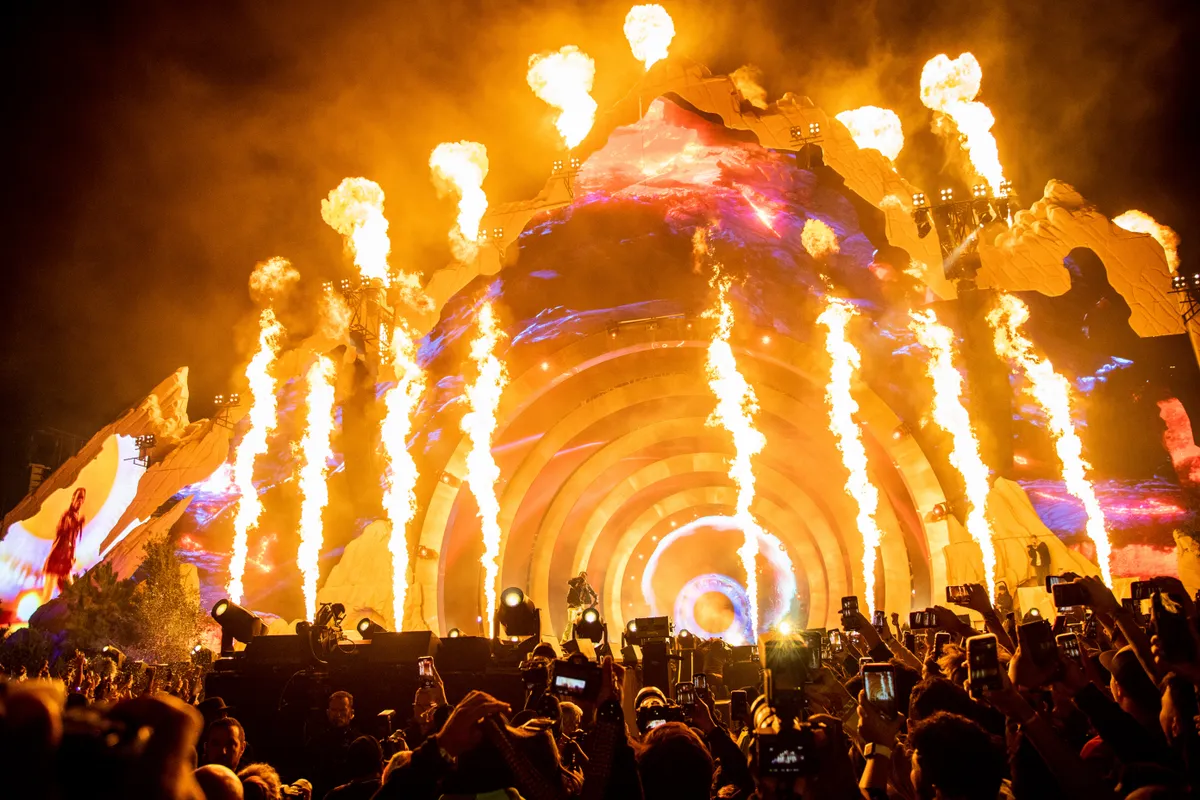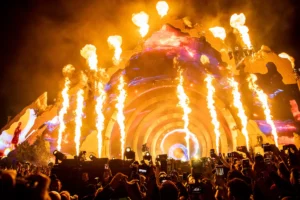Fans Trampled To Death in Human Stampede at Astroworld

by Selene Ashewood ‘22 and Rachel Klein ‘22
 Famous rapper Travis Scott faces legal and media backlash after at least 10 deaths, including that of nine year old Ezra Blount, occurred at his concert on November 5–the first day of Astroworld Festival in Houston. Tight spaces and often-encouraged rowdiness of the crowd created conditions which injured some of the 50,000+ attendees. Blame over the actions taken during the critical hours is scattered–from the event planning, to fans themselves, to Scott possibly ignoring the crises in front of him as he performed.
Famous rapper Travis Scott faces legal and media backlash after at least 10 deaths, including that of nine year old Ezra Blount, occurred at his concert on November 5–the first day of Astroworld Festival in Houston. Tight spaces and often-encouraged rowdiness of the crowd created conditions which injured some of the 50,000+ attendees. Blame over the actions taken during the critical hours is scattered–from the event planning, to fans themselves, to Scott possibly ignoring the crises in front of him as he performed.
Astroworld Festival is known as an immersive and elongated version of Scott’s famously rowdy concerts, all themed around his most successful album to date: Astroworld. The star and his fans have always done intense mosh pits, excessive crowd surfing, stage rushing, and aggressive behavior in general–all with a tradition of disobeying security. At multiple concerts of his before this, the star has been arrested for inciting violence. For example, only five minutes into his set at Lollapalooza 2015, Chicago police halted his performance on the basis of his encouraging fans to climb over barricades and rush the stage. Scott was arrested and later charged with disorderly conduct. The same behavior was seen at the Houston event earlier this month but with more severe consequences.
Around 8:00pm, an hour before the headliner began performing, space in the NRG park venue compressed as fans tried to get closer to the stage. As a result, “people just started dropping” from lack of air, recalls attendee @kingtutsdaughter on TikTok. This did not cause much dispersion, though. Those near the front reported that they were crying due to the uncomfortable and unsafe conditions, but were also praying they wouldn’t have to leave their spot. The show started at 9:00 p.m. only for the first serious injuries to be reported by 9:30 p.m. Once the crowd began jumping to the beat, the already cramped space got tighter, causing a number of people to faint. “Once one fell, a hole opened in the ground…[people were] sucked down,” said @seannafaith on Instagram. Waves of shoving knocked even more people down. Once bodies were on the ground, the jumping didn’t stop and hundreds got severely trampled–starting a mass panic. Evidence obtained from a viral TikTok video depicts large sections of the crowd chanting “stop the show” and others screaming for help. Scott turns in their direction, possibly mistaking the noise for cheering, and says “Make some motherf***ing noise real quick,” a moment cited by many as Scott ignoring the peril. Although there were times where he paused and looked out to the audience, confused, he resumed rapping the majority of those times. “That man died like five songs ago and is still on the ground,” a person is heard saying in the same video. By 9:40, Astroworld Festival night one had been declared a mass casualty event. Scott stopped the show at 10:10 p.m.
Whether it was Scott or the festival’s production company, Live Nation, the party with more control over event conditions is unclear at the moment. However, they are both listed as defendants in many of the hundreds of lawsuits being filed,the largest of which represents at least 125 affected attendees and demands a total of $750 million from defendants Travis Scott, Apple Music, Live Nation, the company owning the venue (ParaDocs), and others. The rest of these lawsuits include expenses for hospital bills and severe injury recovery. For example, the family of Blount, who died after a near-week long coma, is allegedly suing for $1 million. Amid the legal controversy, Scott plans to pay the funeral costs as needed while Live Nation will offer compensation via full refunds to attendees.
Emerging information indicates that multiple safety steps were skipped by those in charge of the event; a claim supported by local authorities. For one, the 56-page plan for operations of the festival was completely missing a section of protocol to follow in the event of a crowd surge. Once a crowd surge did occur, the chest-high barriers enclosing the sides of the venue heightened the claustrophobic effect and panic within the crowd. “This was not a concert; this was a fight for survival,” CNN was told by attendee Jeffrey Schmidt.